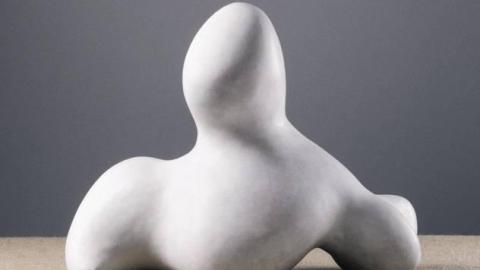A Beautiful Mind

What makes something we see pleasing to our eyes? Is beauty always in the eye of the beholder, or is there something common to the human mind that says, “This is art”? Beauty and the Brain: A Neural Approach to Aesthetics, a new exhibition at The Walters Art Museum, brings together science and art to answer these questions by turning an art gallery into a laboratory, with art patrons the willing participants.
“Our ultimate goal with this experiment and exhibition is to discover how people recognize and appreciate beauty, which lies at the core of the museum experience,” explains Walters Director Gary Vikan. “The critical innovation in this project is mathematical quantification and manipulation of artistic objects, which allow us to measure what subjects find beautiful and relate those measurements to neural responses,” Charles E. Connor, Director of the Mind/Brain Institute at Johns Hopkins University, says more scientifically. The Walters and Johns Hopkins teamed together to create this science project after meetings in late 2007, which boils down to “This is your brain on art.”
Gallery goers willing to participate receive an answer sheet, clipboard, and pencil. Donning 3-D glasses, patrons work their way around the gallery and indicate on the answer sheet which images from each group they find the most and least pleasing. Among the art for study is Jean Arp’s 1959 sculpture La dame de Delos (The Woman of Delos) (pictured). Anyone wanting to know how the study results are going just has to provide an e-mail address.
Neuroscientists have long tried to study the effect of music on the brain, but this in-museum study “heralds a new era in the field of neuroaesthetics,” claims Solomon Snyder, founding chairman of the Department of Neuroscience at Johns Hopkins School of Medicine and Professor of Neuroscience. Solomon believes that Connor’s “work portends a day when we will understand how the brain mediates the creative process, a prospect with immense consequences for all areas of human endeavor.”
I’m not sure what I think about the idea of scientifically determining the creative process as a brain process. If they succeed, would they arrive at a formula for creativity? Would every moment of joy in front of a work of art be explained away by “mathematical quantification”? I applaud the sheer brain power behind this effort to delve deeper into the human mind, but I question what we’ll do once we get there. Among the already suggested goals are learning how to build art exhibitions to appeal to the mind’s natural inclinations for aesthetic pleasure. Is that the first step onto a slippery slope that ends with the elimination of curators of art and the rise of neuroaesthetic scientists? It would be interesting to hear how John Onians, founder of the Neuroarthistory movement, would weigh in on this study.
Beauty and the Brain represents just one small part of a larger study of how the human mind appreciates art. Conclusions from the body of findings may take years to sift through. Here’s hoping that when those conclusions are reached that the magic and wonder of art itself isn’t lost in the calculations.
[Image: Jean Arp, La dame de Delos (The Woman of Delos), 1959, plaster, 14 5/8 x 18 7/8 x 9 ½ inches, Adler & Conkright Fine Art, New York.]
[Many thanks to The Walters Art Museum for providing the image above from Beauty and the Brain: A Neural Approach to Aesthetics, which runs from January 23 through April 11, 2010.]





